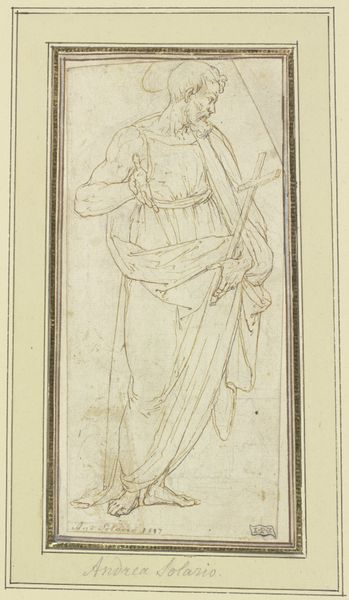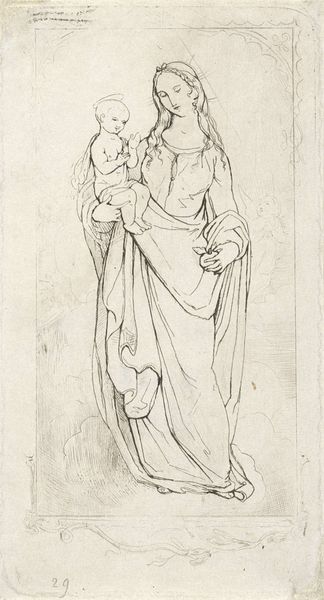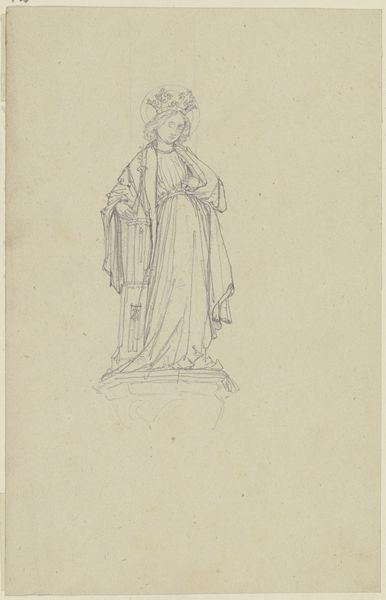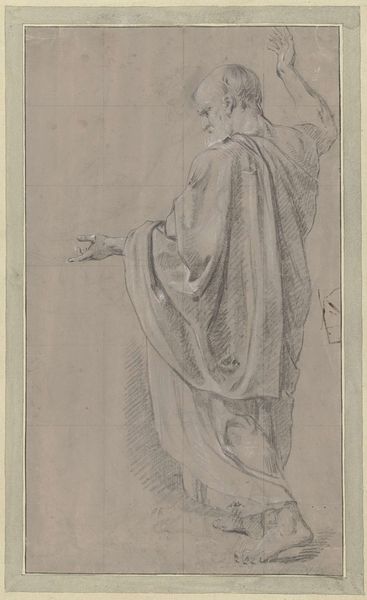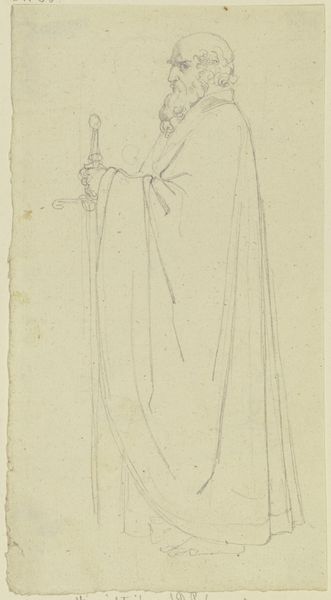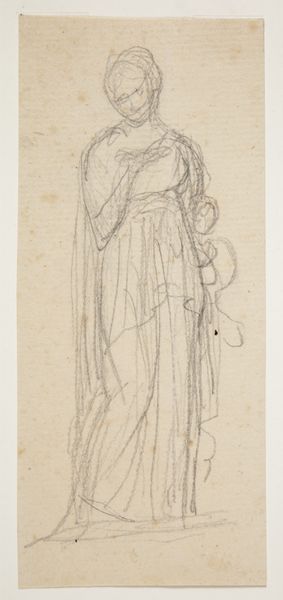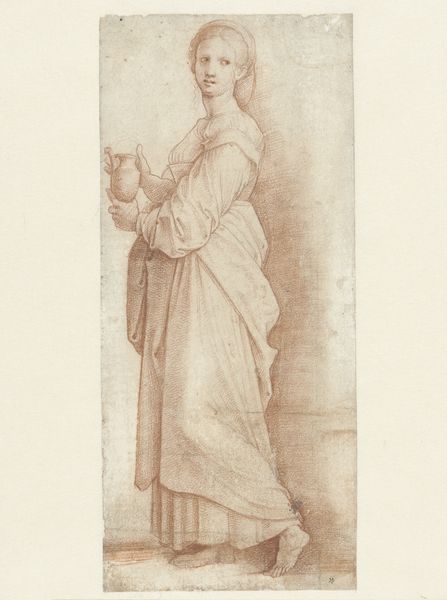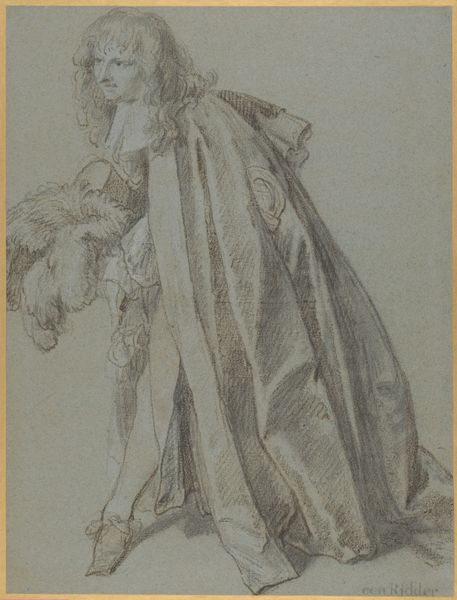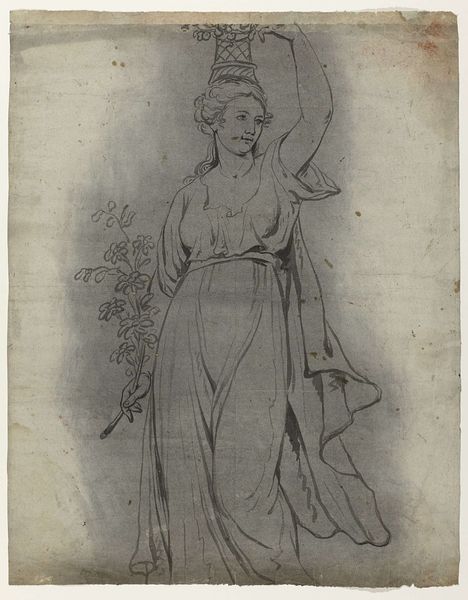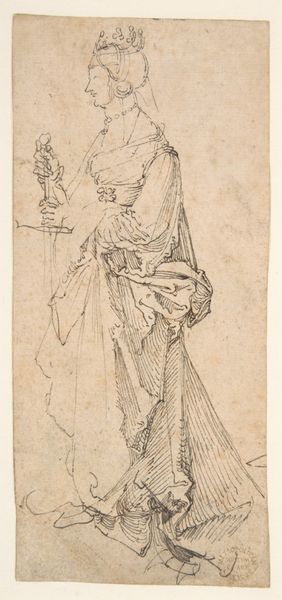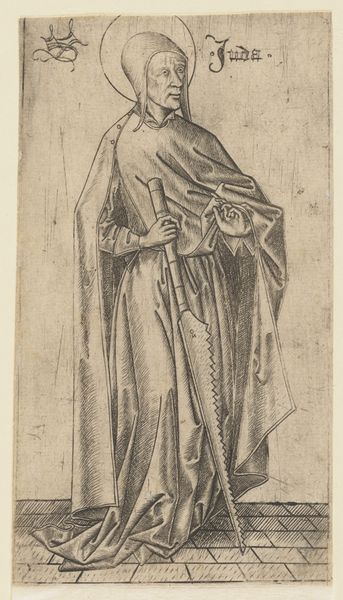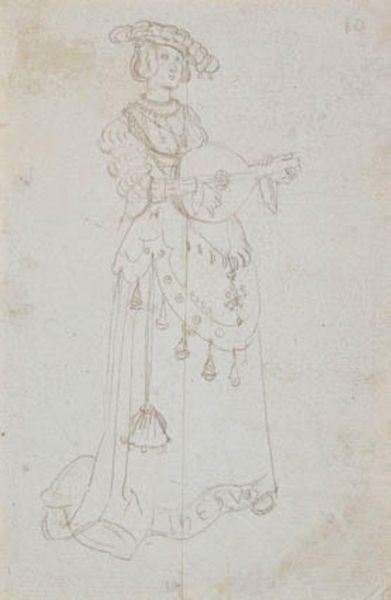
Design for the Figure of "Flora" 1800 - 1900
0:00
0:00
drawing, paper, pencil
#
drawing
#
allegory
#
figuration
#
paper
#
romanticism
#
pencil
#
history-painting
Dimensions: 10 11/16 x 2 11/16 in. (27.2 x 6.9 cm)
Copyright: Public Domain
Editor: This is Edward Burne-Jones's "Design for the Figure of 'Flora'," created sometime between 1800 and 1900, using pencil on paper. There’s something so serene about the figure; despite being just a sketch, it feels complete. What do you see in this piece? Curator: I see echoes of Botticelli's Flora, reborn in the aesthetic sensibilities of the late 19th century. Notice how the lines are soft, almost dreamlike. Consider the grid underneath—it's a very deliberate choice. How do you think that influences the viewer? Editor: I suppose the grid emphasizes the design aspect of the work. It reminds me this wasn’t the final piece, but a carefully planned design for something else. Does that diminish her presence? Curator: Not necessarily. Think about the symbolism inherent in Flora herself. She represents spring, rebirth, beauty… but also fragility, the fleeting nature of time. Burne-Jones is layering meaning here. Editor: So, it's not just a pretty picture; it's loaded with all these historical and allegorical connotations, filtered through a Romantic lens. It feels like she is carrying not only flowers but also the weight of the past. Curator: Exactly! The image resonates through time. Consider how even the medium—pencil on paper—contributes to that sense of ephemeral beauty. It’s fragile but carries potent emotional weight. Editor: I never considered the medium itself as adding another layer of meaning. I thought pencil was just a choice because this was a study. I’m definitely seeing this design in a new light now!
Comments
No comments
Be the first to comment and join the conversation on the ultimate creative platform.
